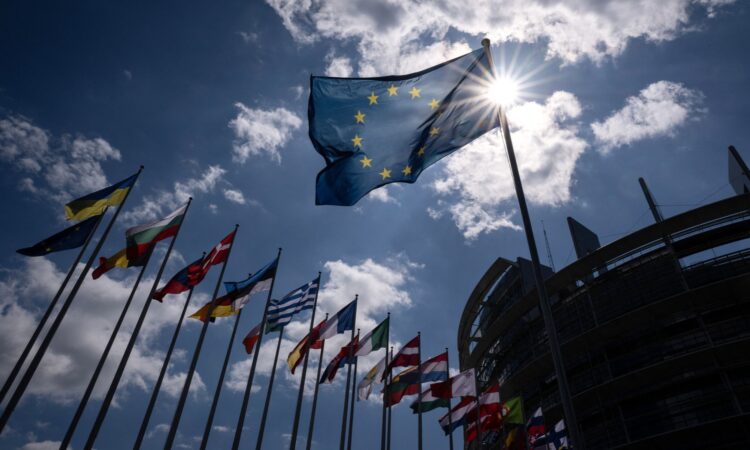
Helena Viñes Fiestas is chair of the EU Platform on Sustainable Finance
Companies need to take advantage of the wave of green investments waiting to be unleashed into the EU economy
Political debate during the European elections showed a concerning rise in criticism of the EU’s green policies. While some claim such policies clash with the pursuit of greater competitiveness, green measures are in fact a sign of the bloc’s global leadership and are already boosting many companies’ competitiveness.
Since 2018, I have worked with experts in the EU Platform on Sustainable Finance on the union’s sustainable finance strategy to help its financial system support a sustainable and resilient economy.
While the climate crisis presents real risks for our economy, the green transition opens massive opportunities to strengthen it.
To attract the funding needed for this unavoidable transition, companies must provide clear information on exactly how they plan to change. This is where the EU rules show their worth. The data they generate is helping companies to outperform their peers, create transition plans and attract funding to put those plans into effect, as we show in a recent report that surveyed dozens of European businesses.
More investments and more competitiveness
When carrying out our survey, we were struck by the story of a utility company that moved its decarbonisation target forward by 10 years. To achieve this transition, it used the EU’s new guidebook for green investments, the EU taxonomy, to allocate 80 per cent of its future investments, or capital expenditures, into green activities such as renewables, energy distribution, smart lighting and energy efficiency.
More than 720 companies across Europe with a combined market value of more than €6.5tn have followed suit, investing €249bn in 2023 in sectors that are vital to mitigate climate change, such as transport, manufacturing and power generation. Companies that cannot align with the taxonomy today are using it to establish medium and long-term net zero and sustainability objectives.
Clear investment targets are the DNA of a strong transition plan, and having an EU-backed definition of green investments has been vital to design companies’ transitions and to reduce their risk of being accused of greenwashing.
The taxonomy also helps companies to perform better. According to Goldman Sachs data, companies with high revenues from activities aligned with the taxonomy outperformed their competitors over the past five years. Companies with substantial planned investments in taxonomy-aligned activities have also outperformed their peers since 2022. This success story tells us that chief executives seeking to boost their companies’ competitiveness and position themselves as leaders in this transition should look to the EU’s green agenda for guidance.
Better banking
Banks are also benefiting from the data they are getting from companies. Under the new transparency rules of the Corporate Sustainability Reporting Directive, companies are expected to start disclosing their transition plans. This step will help lenders to understand how advanced and serious their clients are in their net zero transition.
Transparency improves the relationship on both sides: banks can adapt their offer to increase the client’s chances of success, while companies can set targets and, by meeting them, earn the bank’s trust. In fact, banks can also use this data to create incentives that reward clients who meet their targets ahead of schedule.
Having better information on companies in their portfolios also helps banks to manage their own transition by foreseeing and minimising any risks — a vital step in preventing financial crises.
Thanks to the EU’s rules, Europe leads the world in raising money from capital markets for the green transition. The EU is the global hub for green bonds. This instrument had helped our governments raise €266bn by 2022 — more than three times the €85bn raised in 2019. European companies have also more than doubled their green bond issuance since 2019, and 56 per cent of all EU funds now have a sustainable objective or characteristics.
Even small and medium-sized enterprises, which have not been the focus of these green rules, can benefit from them. New research shows that about 10 per cent of SMEs in the EU have obtained sustainable loans. This figure is likely to increase as the union begins to create tailored frameworks to help SMEs gain access to sustainable finance.
Whether you are the director of a large or a small company, the EU’s rules are creating new ways of financing your business. We must now increase that support, particularly for SMEs, which are the backbone of Europe’s economy.
More work is needed
Before the sustainable finance strategy, investors faced a “wild west” of greenwashed investment products. This state of affairs robbed them of the confidence they needed to invest and starved companies of financing.
After six years of hard work, investors have more information on green shares, funds and other products, while companies have more ways to attract the funding needed to innovate and become more competitive.
The foundations of the sustainable finance agenda have been laid. The next European Commission must make it simpler to use these rules and collaborate with companies, particularly SMEs, to increase their use of the financing tools at their disposal.
There is a wave of green investments waiting to be unleashed into our economy if we keep building a robust sustainable finance agenda. Let’s not miss this opportunity.






